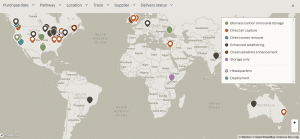URGENT UPDATE: New insights from decades of songbird research in New Hampshire reveal critical changes in their habitats and behaviors. A dedicated team of researchers has been mapping songbird territories since 1969, and their findings are more relevant than ever as environmental changes accelerate.
The ongoing study, which has spanned over 50 years, is uncovering alarming trends that could affect conservation efforts across the region. The latest data shows shifts in songbird populations, highlighting the urgent need for targeted conservation strategies. Researchers emphasize that understanding these changes is vital for protecting these species and their ecosystems.
In the original study, researchers meticulously mapped a forest area in central New Hampshire, documenting the various songbird species that inhabited the region. This groundbreaking work has continued into the present day, utilizing advanced mapping techniques and technology to provide real-time data on population dynamics.
Dr. Emily Carter, lead researcher at the New England Wildlife Center, stated, “The changes we are observing are both fascinating and concerning. With climate change and habitat loss, we must adapt our conservation approaches.” Her team’s findings are pivotal for wildlife management and conservation policy.
The implications of these insights extend beyond the forest. As songbirds serve as indicators of environmental health, their decline signals broader ecological issues. The research underscores the interconnectedness of species and the urgent need for action to safeguard vulnerable habitats.
Looking ahead, researchers are calling for increased funding and resources to further their work. They are also urging policymakers to implement immediate conservation measures to protect songbird populations.
In a world facing unprecedented environmental challenges, the story of New Hampshire’s songbirds serves as a poignant reminder of the fragility of our ecosystems. As new data continues to emerge, the urgency for intervention grows stronger.
Stay tuned for further updates on this developing story, as researchers continue to monitor and analyze these critical changes in songbird populations. The future of New Hampshire’s forests—and the songbirds that inhabit them—depends on our response today.





























































